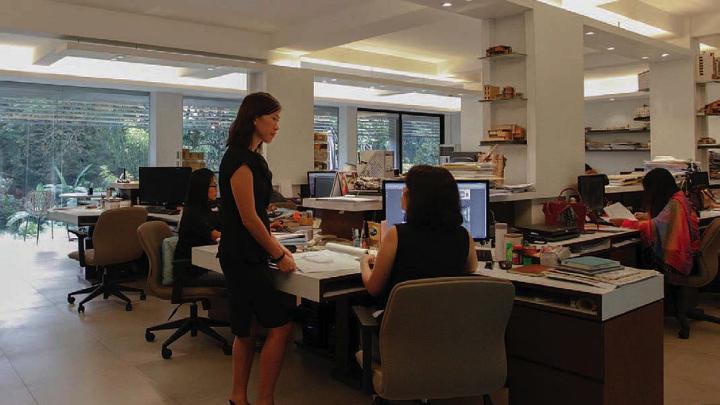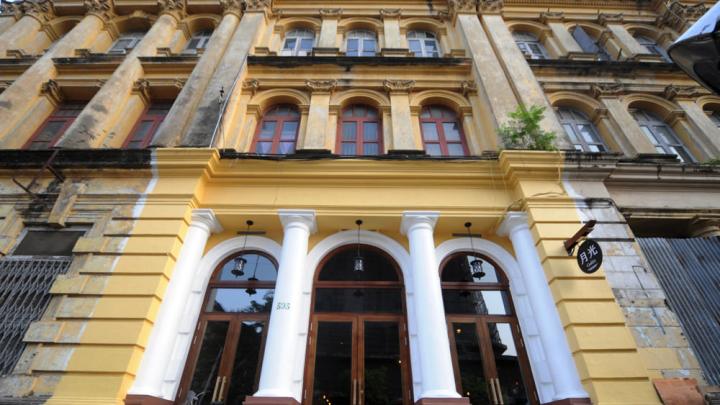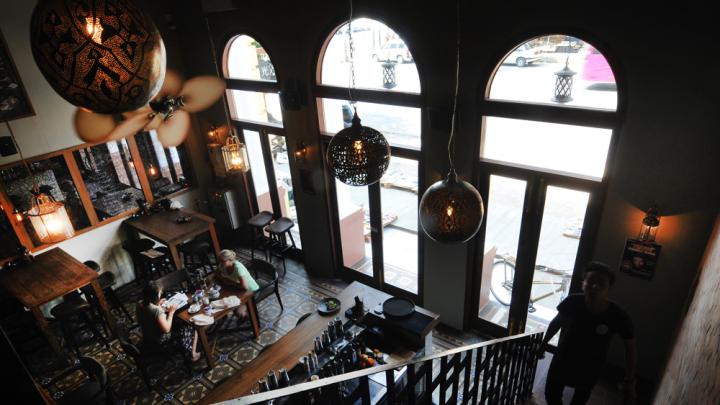Amelie chai ’93 has always been drawn to architecture “for its emotional as well as visual power.” As a child, she drew maps of neighborhoods, trying to understand spatial relationships and imagine the interiors of the buildings, and she continues to think about the relationship between the outer and inner worlds of structures. Talking of architecture that is “truthful to its structure,” she says, “I never understood how a façade could be designed to have no relationship to its interior configuration.”
A visual and environmental studies concentrator with a minor in social anthropology, she finds that her work still relates to those studies. “I am particularly interested in the social and cultural aspects of architecture,” she explains. “I deeply appreciate the encouragement I had from my professors,” including the late anthropologist and documentary filmmaker Robert Gardner.
Chai earned her master’s in architecture at Columbia, where she met her husband, Stephen Zawmoe Shwe, who was born in Myanmar. When the couple initially decided to move there, she assumed it would be for a couple of years at most. “It was a hard transition,” she recalls. “I had always enjoyed traveling, but actually settling down somewhere that was so isolated at the time was difficult.” There were frequent power cuts and “things breaking down all the time”; poor Internet service left her feeling isolated from her friends and family. Eventually, though, the future seemed much more promising, personally and professionally: “The prospect of designing and growing a business in an emerging country, and the ability to share knowledge with other young architects, were exciting and motivating. Also, the opportunity to raise children and care for parents within a multigenerational household was something that I could actually achieve in Myanmar, but couldn’t imagine happening in the States.”
Learning Burmese helped, though she describes “a wide latitude of interpretation built into the culture. After attending the same meeting, four people often have a totally different understanding of what was discussed and agreed upon.” She and Shwe also had to deal with a “general lack of technical expertise and skilled construction workers” when they started their architectural firm, SPiNE, in 2004. But Chai says this only pushed her to “understand how we can improve what we design, improve our details, and encourage our teams to do the same.” By 2012 The New York Times described SPiNE as “among the most prominent contemporary design and architecture firms” in Yangon; clients have included the World Bank and the U.S., British, and Korean embassies.
Myanmar has inspired Chai in more ways than one. Its tropical climate and lush greenery have shaped SPiNE’s style: “As much as possible, we try to integrate gardens and terraces,” she says. “Our home and office face a jungle, with several immense rain trees and a family of monkeys—a very special and rare pocket of wilderness to find in the middle of the city.”
As a result of Myanmar’s long isolation and slow development, she points out, “There are still many heritage buildings in Yangon that are more than a hundred years old. It’s been a great pleasure to have the opportunity to work on quite a few of these projects.” One involved creating a restaurant and bar in a 1906 building—a project that won the 2018 Yangon Heritage Trust award for adaptive reuse. “Architecturally, it was one of the first undertakings to revitalize historical buildings in Yangon,” she says. The renovation “opened the eyes of the public to the potential of such heritage places,” and the necessary revamp of the building’s sewage and drainage systems benefited the other inhabitants. “Every project, regardless of its scale, has meant that a neglected space is brought back to life.”











